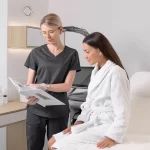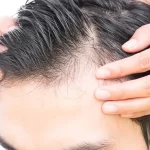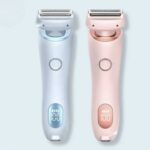Overactive bladder (OAB) and incontinence are conditions that affect millions of people worldwide, significantly impacting their quality of life. Understanding these conditions and implementing effective management strategies can help alleviate symptoms and improve daily functioning. Consulting the best urologist in Kerala can provide tailored treatment plans and expert guidance. This comprehensive guide explores effective strategies for managing overactive bladder and incontinence.
Understanding Overactive Bladder and Incontinence
Overactive bladder is characterized by a sudden, uncontrollable urge to urinate, often leading to incontinence. This condition can result from various factors, including bladder muscle overactivity, neurological disorders, or lifestyle choices. Incontinence, the involuntary leakage of urine, can be categorized into several types:
- Stress Incontinence: Leakage during activities that increase abdominal pressure, such as coughing, sneezing, or lifting.
- Urge Incontinence: Sudden, intense urge to urinate followed by involuntary leakage.
- Overflow Incontinence: Inability to empty the bladder fully, leading to frequent dribbling.
- Functional Incontinence: Inability to reach the toilet in time due to physical or cognitive impairments.
Lifestyle Modifications
1. Dietary Changes
Certain foods and beverages can irritate the bladder, exacerbating OAB and incontinence symptoms. Adjusting your diet can help manage these conditions effectively.
- Limit Caffeine and Alcohol: These can increase bladder activity and lead to frequent urination.
- Avoid Spicy Foods and Citrus Fruits: These can irritate the bladder lining.
- Stay Hydrated: While it might seem counterintuitive, staying hydrated is essential. Dehydration can concentrate urine, irritating the bladder.
- Monitor Fluid Intake: Spread fluid consumption throughout the day and avoid large amounts of fluids before bedtime.
2. Weight Management
Excess body weight can put additional pressure on the bladder, worsening incontinence. Achieving and maintaining a healthy weight through diet and exercise can alleviate symptoms.
3. Bladder Training
Bladder training involves gradually increasing the intervals between urination to improve bladder control. Techniques include:
- Scheduled Voiding: Urinating at set times, gradually extending the time between trips to the bathroom.
- Delay Techniques: When the urge to urinate arises, try delaying urination for a few minutes and gradually increase the delay time.
Pelvic Floor Exercises
Pelvic floor exercises, also known as Kegel exercises, strengthen the muscles that support the bladder. These exercises are beneficial for both men and women and can help manage various types of incontinence.
How to Perform Kegel Exercises:
- Identify the Muscles: The easiest way to find the right muscles is to stop urination midstream. The muscles you use are your pelvic floor muscles.
- Practice Regularly: Contract the pelvic floor muscles for a count of three, then relax for a count of three. Gradually increase to ten repetitions, three times a day.
- Maintain Consistency: Regular practice is key to seeing improvements.
Medications
Several medications can help manage overactive bladder and incontinence. Consulting the best urologist in Kerala ensures the right medication is prescribed based on individual needs and medical history.
Common Medications Include:
- Anticholinergics: These reduce bladder muscle contractions, helping to decrease urgency and frequency.
- Beta-3 Agonists: These relax the bladder muscle, increasing bladder capacity and reducing urgency.
- Topical Estrogen: For postmenopausal women, topical estrogen can improve urinary function by rejuvenating tissues in the urethra and vaginal area.
Behavioral Therapies
Behavioral therapies can be effective in managing OAB and incontinence without the need for medication. These include:
1. Bladder Diary
Keeping a bladder diary helps track urination patterns, fluid intake, and episodes of incontinence. This information can be valuable for your urologist in developing a personalized treatment plan.
2. Biofeedback
Biofeedback involves using sensors to monitor muscle activity, helping individuals learn how to control their pelvic floor muscles effectively. This therapy can enhance the effectiveness of pelvic floor exercises.
Medical Interventions
For severe cases of overactive bladder and incontinence, medical interventions may be necessary. Consulting the best urologist in Kerala can provide access to advanced treatment options, including:
1. Botox Injections
Botox injections into the bladder muscle can relax the bladder, reducing symptoms of OAB. This treatment is typically reserved for those who do not respond to conventional therapies.
2. Nerve Stimulation
Nerve stimulation techniques, such as sacral neuromodulation or percutaneous tibial nerve stimulation, can help regulate bladder function by targeting the nerves that control the bladder.
3. Surgical Options
In rare cases, surgical interventions may be considered. These can include procedures to support the bladder neck or increase bladder capacity.
Managing Incontinence Products
For individuals experiencing incontinence, managing daily life can be challenging. Incontinence products, such as pads, adult diapers, and protective underwear, can provide comfort and confidence.
Choosing the Right Products
- Absorbency Levels: Choose products with appropriate absorbency for your needs.
- Fit and Comfort: Ensure a snug fit to prevent leaks and provide comfort.
- Odor Control: Select products with odor control features for added discretion.
Emotional and Psychological Support
Living with overactive bladder and incontinence can take an emotional toll. Seeking support from healthcare professionals, support groups, or counselors can provide much-needed emotional and psychological support.
1. Support Groups
Joining a support group allows individuals to share experiences, gain advice, and find comfort in knowing they are not alone.
2. Counseling
Professional counseling can help address the emotional impact of living with OAB and incontinence, offering strategies to cope with stress and anxiety.
When to See a Urologist
While lifestyle changes and home remedies can be effective, it’s crucial to know when to seek professional help. Consulting the best urologist in Kerala is recommended if:
- Symptoms Persist: If symptoms continue despite trying lifestyle modifications and over-the-counter treatments.
- Severe Impact on Quality of Life: If OAB and incontinence significantly impact daily activities and emotional well-being.
- Unclear Diagnosis: If the cause of symptoms is unclear, a urologist can perform tests to diagnose the condition accurately.
Choosing the Best Urologist in Kerala
Selecting the right urologist is crucial for effective management of overactive bladder and incontinence. Here are some tips for finding the best urologist in Kerala:
- Check Credentials: Ensure the urologist is board-certified and has specialized training in treating OAB and incontinence.
- Read Reviews: Look for patient reviews and testimonials to gauge the quality of care provided.
- Experience: Choose a urologist with extensive experience in managing similar conditions.
- Consultation: Schedule a consultation to discuss your symptoms and treatment options, ensuring you feel comfortable with the urologist’s approach.
Conclusion
Managing overactive bladder and incontinence requires a comprehensive approach that includes lifestyle modifications, exercises, medication, and professional support. Understanding these conditions and implementing effective strategies can significantly improve symptoms and quality of life.
For residents of Kerala, consulting the best urologist in Kerala ensures access to expert care and advanced treatment options. Prioritizing bladder health and seeking timely medical advice can make a profound difference in managing these challenging conditions. Remember, with the right support and strategies, living with overactive bladder and incontinence can become more manageable, allowing you to regain control and confidence in your daily life.











